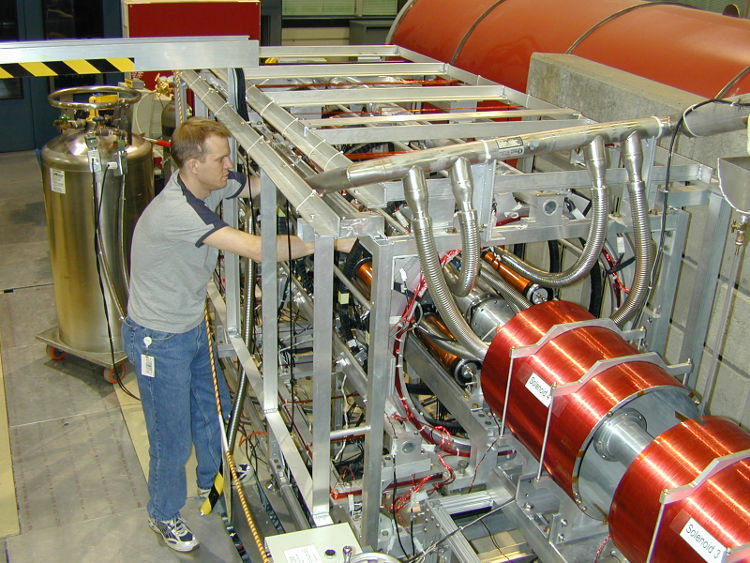The universe, a grand tapestry of cosmic phenomena, harbors profound enigmas that challenge our understanding of existence. One such mystery is the imbalance between matter and antimatter — a conundrum that has bewildered physicists since the dawn of modern cosmology. The BaBar experiment, an intricate venture housed at the SLAC National Accelerator Laboratory, has played a pivotal role in illuminating the intricacies of this imbalance, corroborating theories about the genesis of our universe.
At the inception of the cosmos, shortly after the Big Bang, it is hypothesized that equal amounts of matter and antimatter were generated. Yet, as we gaze into the night sky, the realization dawns: the observable universe is overwhelmingly constituted of matter, leaving a scant presence of its elusive counterpart, antimatter. This discrepancy raises profound questions about the foundational fabric of reality itself. The BaBar collaboration, initiated in 1999, sought to scrutinize the dissimilar behavior of matter and antimatter through the decay patterns of B mesons — subatomic particles containing beauty or charm quarks.
The crucial apparatus of BaBar utilized a particle accelerator to collide electrons with positrons, generating B mesons as byproducts. The aftermath of these collisions yielded a cornucopia of data that laid bare the subtleties of matter-antimatter interactions. By meticulously analyzing the decay into lighter particles, researchers uncovered asymmetries that hinted at a deeper, underlying phenomenon—a breach of CP symmetry. This violation, where processes involving particles are not mirrored by their antiparticle counterparts, serves as a beacon guiding physicists through the labyrinth of quantum mechanics.
But why does this asymmetry matter? It is not merely a whimsical inquiry into the behavior of particles; it is a fundamental question about the very nature of the universe. The observed preponderance of matter suggests that, at some fundamental level, nature is not as symmetrical as once presumed. This leads to inextricable links to theories beyond the standard model of particle physics, inviting speculation regarding new particles and forces that could rectify the balance. The BaBar findings did not just reaffirm the idea of CP violation; they propelled theoretical physics into new realms, prompting scholars to explore grand unification theories and potential extensions of current models.
Moreover, the implications of the BaBar experiment reach far beyond theoretical musings. They invite us to participate in a narrative that defines humanity’s quest for knowledge. The interaction of B mesons acts as a microcosm reflecting broader themes prevalent in the universe—a metaphor for the eternal struggle between opposing forces. Just as the cosmos emerged from the cataclysm of the Big Bang, so too do the intricate dance of particles forge the universe’s history, echoing the duality inherent in nature itself.
In addition to the captivating insights derived from the BaBar collaboration, advancements in technology and instrumentation have played a crucial role in the quest to unravel the mystery of matter-antimatter asymmetry. The delicate nature of B mesons necessitated the design of sophisticated detectors capable of capturing fleeting interactions with remarkable precision. Coupled with advancements in computational methodologies, researchers developed algorithms that sifted through vast datasets, revealing patterns obscured by the cacophony of subatomic events. This amalgamation of technology and theory exemplifies the interdisciplinary nature of modern physics, where each advancement propels us closer to unveiling the cosmos’s secrets.
Further revelations emerged through the intricate interplay of BaBar data with complementary experiments conducted at facilities such as CERN’s Large Hadron Collider. These efforts form a symbiotic relationship among research institutions worldwide, underscoring the collaborative spirit that defines contemporary scientific inquiry. Such collaboration holds the promise of piecing together the puzzle of the universe’s destiny, and perhaps even revealing the existence of hidden symmetries or previously theorized particles that could restore equilibrium.
In the narrative of particle physics, BaBar stands as a testament to human ingenuity—an ambitious undertaking devoted to understanding the fundamental laws of nature. The experimental revelations have sparked a renaissance of inquiry into the origins of the universe, inviting a plethora of questions about dark matter, cosmic inflation, and the very fate of existence. In this ongoing saga, physicists grapple with contradictions that fuel the imagination, each discovery nuanced enough to elevate the discourses surrounding the formation of the universe.
As we delve deeper into the realms of high-energy physics, the BaBar experiment serves as both compass and crucible. It urges scientists to question assumptions, to unravel complexities, and to remain open to the enigmatic nature of reality. The implications of matter-antimatter asymmetry reverberate throughout the fabric of science, forging connections that extend well beyond the confines of the laboratory. In this grand arena, the resonance of questions outweighs the certainty of answers—a hallmark of human inquiry that continuously propels us forward.
In conclusion, the BaBar collaboration has encapsulated the spirit of exploration intrinsic to physics. By confirming the matter-antimatter imbalance, it not only enriches our understanding of the universe but also deepens the philosophical implications intertwined with our existence. The universe, ever mysterious, continues to beckon us toward further inquiry, as we endeavor to illuminate the uncharted territories of reality.












